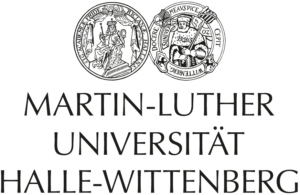Intracrystalline dynamics of polybutylene succinate and poly(3-Hydroxybutyrate)
by Afiq Bin Anuar
Non-linear mechanical properties of polycaprolactone polymer/oligomer blends with defined entanglement density and crystalline thickness
by Tonghua Liu
chair: Twinkle
date: February 28, 14.30
hybrid seminar: VSP 1, 5.09 + zoom
Intracrystalline dynamics of polybutylene succinate and poly(3-Hydroxybutyrate)
by Afiq Bin Anuar
The dynamics behavior of polymers chain in crystal lamellae plays a critical role for its semicrystalline morphology [1, 2]. It is influenced by this intracrystalline dynamics (ICD) explaining the factors that limit its crystal thickness during isothermal crystallization. In this work, two different behaviours of semicrystalline polyesters, namely polybutylene succinate (PBS) and poly(3-Hydroxybutyrate) (P3HB), are discussed. A combination of nuclear magnetic resonance (NMR) techniques shows that isothermally crystallized PBS exhibit slow ICD longer than 1s which is similar to the reported crystal-fixed polymer, polycaprolactone [1]. Meanwhile, in P3HB crystal chain, the ICD with correlation jump motion around 0.1 s/monomer at 120°C was detected. This is in contrast to previous reported [3] demonstrating a crystal-mobile behavior. Small-angle X-ray scattering measurement reveal that the P3HB crystal lamellae are significantly thicker than in PBS, confirming that P3HB and PBS can be classified as crystal-mobile and crystal-fixed, respectively. Details regarding morphology are shown in the presentation.
References:
[1] Schulz, M., et al., Macromolecules 2018, 51, 8377.
[2] Schulz, M., et al., Nat. Common. 2022, 13, 1.
[3] Xia, Z., et al., Soft Matter 2021, 17, 4195.
Non-linear mechanical properties of polycaprolactone polymer/oligomer blends with defined entanglement density and crystalline thickness
by Tonghua Liu
The mechanical properties of semi-crystalline polymers are determined by the semi-crystalline morphology and the entanglements in the amorphous regions. Here we use polymer/oligomer blends to control the entanglement density independently of the crystallinity. This system is also used as a model to study effects on the non-linear mechanical properties. The aim of the project is to develop a quantitative method for the determination of the entanglement density in the amorphous region as well as to investigate its relation to yielding, modulus and strain hardening. A separation of viscous and elastic contributions can be achieved by inserting relaxation measurements during the deformation. Our preliminary results indicate a strong effect of the crystallinity on the modulus and yield stress. The relation between strain hardening and entanglement density will also be discussed.




